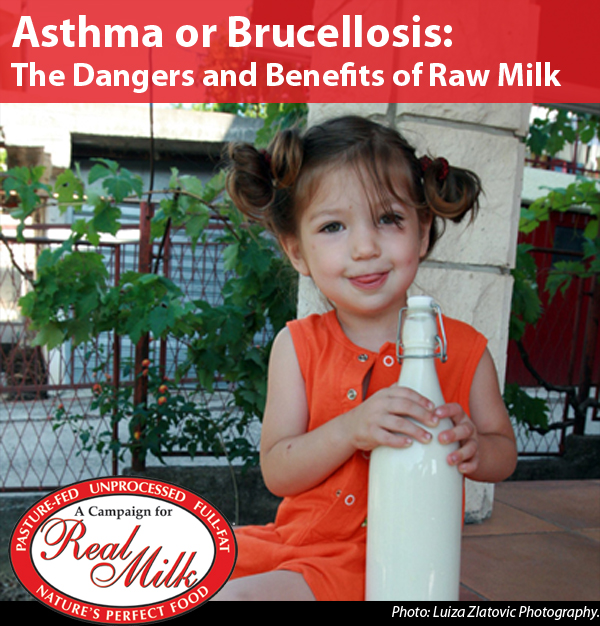National Updates
January 1, 2000The Case for Butter
April 22, 2000Two articles appearing recently in the prestigious British medical journal, The Lancet, illustrate the ongoing debate on the dangers and merits of raw milk. One article describes the case of a woman who contracted brucellosis after eating some raw goat cheese during a trip to Italy.1 The cause of her fibromyalgia-like symptoms was determined after exhaustive tests to be brucellosis or undulant fever, and the source traced to ingestion of unpasteurized soft cheese during her European holiday. She was treated successfully with the appropriate antibiotics.
The second article describes a study carried out by scientists in Salzburg, Austria. Researchers examined the history of allergy, asthma and “atopic sensitization” or skin problems in 812 children, 319 of whom had grown up with a “regular exposure to a farming environment” including the consumption of “farm milk,” that is, raw, whole, unprocessed milk.2 The remaining group of 493 non-farming children acted as a control. Frequency of asthma was reduced from 11 percent found in the control group to 1 percent among the farming-exposed children. Similarly, hay fever occurred in only 3 percent of the farming-exposed children, compared with 13 percent of the controls, and atopic sensitization occurred in 12 percent of the farming group and in 29 percent of the controls.
The researchers found that the timing of exposure to the farm environment and raw milk was critical. Those children exposed during the first year of life showed the greatest protective effect. Continual long-term “exposure to stables” until age five years was associated with the lowest frequencies of asthma, hay fever and atopic sensitization.
Subsequent comments on this article3 stress “exposure to stables” as the determining factor but we wonder whether this is any different than exposure to pets in the typical urban home. It is much more likely that consumption of raw milk is the determining factor because this variable can be uniquely determined.
These two articles perfectly describe the dilemma confronting health officials: asthma or brucellosis? Should our milk be pasteurized to prevent the rare case of brucellosis transfer; or should raw milk be made available to avoid asthma and dermatitis in our growing children?
Any mother who has observed the suffering of her asthmatic child, or wracked her brain to find a product that will stop her youngster’s unsightly and itchy rash, would opt for the latter. These illnesses—for which modern medicine can offer only palliatives—cause so much lost school, missed activities, and physical and psychological suffering that any mother would gladly risk contracting brucellosis herself in order to have protective raw milk available for her growing children.
And particularly when modern science makes it possible to have brucellosis-free herds. Tests are widely available to detect brucellosis in cattle, goats and sheep. In addition, studies have shown that the risk of brucellosis increases as herd size goes up.4 Nutrition of the animals almost certainly plays a role. Small herds on fertile pasture or appropriate feed, regular testing, clean barns, milking machines, stainless steel tanks and refrigerated trucks all make it entirely possible to get healthy, clean, certified raw milk to the public.
The alternative—pasteurized, processed milk from large herds crowded into barns and given hormones and antibiotics—causes problems in an increasing number of people. How many customers does the dairy industry have to lose to putative “milk allergies” before it sees the light and opts for quality rather than quantity, for thousands of prosperous small dairies delivering directly to the consumer rather than small numbers of huge herds, confined to barns and producing dirty milk that must have its vital elements destroyed by pasteurization and processing.
1. Lancet 1999 Jul 24;354(9175):300.
2. Lancet 2001 Oct 6;358(9288):1129-33.
3. Lancet 2002 Feb 16;359(9306):623-4.
4. Preventive Veterinary Medicine, 1998 Dec;1(37):185-196.
This article appeared in the Spring 2000 issue of Wise Traditions, the quarterly journal of the Weston A. Price Foundation.
[include content_id=634]



3 Comments
We pay 10.00 a gallon in New Mexico but I have multiple allergies.
Yes, plus raw milk farmers don’t get help f
rom the government like pasteurized CAFO’s do.
Luckily I only pay 80 euro cents for a litre of Jersey cow’s milk (Netherlands).